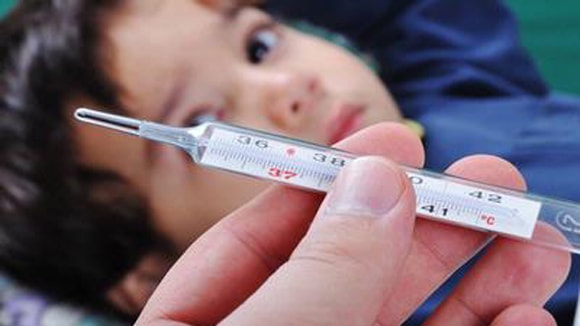Do not abuse fever-reducing drugs
“In most cases, fever should be left alone. Evidence suggests that reducing fever can actually hinder recovery from infection,” says Dr. Paul Young.

Illustration photo.
Recently, it has been found that the downside of fever treatment is manifested in the following aspects: Increased mortality due to infection in animals;runny nose symptomswhen children have colds that get worse; The blisters in children with chickenpox take longer to heal; The immune response to children after vaccination is weaker.
One thing that almost everyone knows is that fever is very useful in preventing infection. Before humans inventedantibioticsIn the late 19th century, a common method of treating common illnesses was based on fever. However, nowadays people are more interested in reducing fever, a trend that seems to be based on no scientific evidence and the reason is that medicines are more diverse and accessible.
The reason we try to reduce a fever when we feel our body temperature rising is because we fear that it will continue to rise, possibly damaging the brain and other organs. It is true that temperatures above 41°C can be dangerous, but such high fevers are usually associated with events such as stroke, when the body's thermoregulatory mechanism is disrupted.
Although high fevers caused by infection can trigger seizures or fainting in about 5 percent of children, there is no evidence that reducing fever reduces the risk of febrile seizures. Trying to reduce a fever quickly in this case can even trigger a seizure, says Professor Dominic Fitzgerald, a respiratory specialist at Westmead Children's Hospital in Sydney, Australia.
The medical community advises that fever-reducing drugs can be used when the body temperature is 38.5 degrees Celsius or higher and the person with the fever feels "uncomfortable and restless". However, the purpose of this is only to support and create a more comfortable feeling, not to try to bring the temperature back to normal because a high fever is a sign that the body's immune system is working well to fight the infection.
According to Dr. Paul Young, whether or not to intervene when having a fever depends on the patient's condition. For mild illnesses such as colds, people usually spend about a day tired, the body will feel better. If the fever is high and accompanied by discomfort, fatigue or pain, paracetamol can be used to reduce the fever. In addition, if there are unusual signs or the person with the fever suddenly becomes weak, do not hesitate but take the patient to a medical facility promptly.
According to An Ninh Thu Do/Abc.net.au-NT






